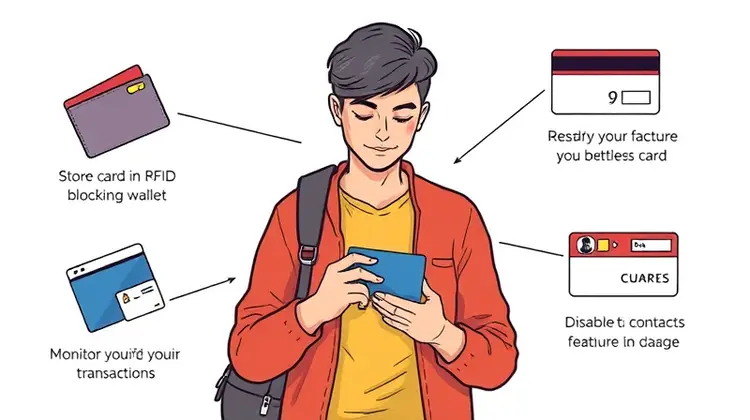As technology advances, the financial world is constantly evolving, leading to new ways of conducting transactions. Among the latest developments are contactless payments, which allow consumers to make purchases swiftly and securely. This article explores the key benefits of using contactless cards while addressing essential security tips for users.
With the ongoing global shift towards a cashless society, contactless cards are becoming increasingly popular. Not just for their convenience, but also for the enhanced experience they provide during transactions, these cards are set to redefine the norms of everyday purchases. Understanding how they work and the security measures to adopt is crucial for users.
The Rise of Contactless Payments

The past decade has witnessed a monumental shift in consumer behavior, with contactless payment methods emerging as a popular choice. The COVID-19 pandemic accelerated this trend, as people sought safer options to minimize physical contact while shopping. As a result, industries have increasingly adopted this technology to cater to changing consumer demands.
Historically, cash and traditional card transactions required physical contact, which posed certain risks. Contactless payments mitigate these issues, offering a seamless and hygienic alternative. With an array of payment options available, such as mobile wallets and RFID-enabled cards, the convenience factor has become a primary driver in the rise of contactless payments.
How Contactless Cards Work

Contactless cards utilize Near Field Communication (NFC) technology, which allows for secure, wireless communication between the card and a payment terminal. When a cardholder holds their card within a few centimeters of a compatible terminal, a transaction can be initiated almost instantly.
This method of payment maintains strict security protocols. Each transaction generates a unique code that prevents card duplication and fraud. As a result, users can confidently enjoy quick and efficient transactions without compromising their sensitive information.
Benefits of Contactless Cards

Contactless cards offer several advantages that significantly enhance the purchasing experience for consumers. Firstly, the speed and efficiency of transactions reduce the time spent at checkout, allowing users to move through the payment process quickly. This is especially beneficial in busy environments like grocery stores or public transport systems, where long lines can be frustrating.
In addition to time savings, contactless payments can contribute to better budgeting and tracking of expenses. Many financial institutions provide statements that categorize spending, helping users monitor their finances effectively. Thus, adopting contactless cards can lead to improved financial awareness and better financial habits.
- Speedy Transactions: Pay in seconds without the need for PIN or signature for small purchases.
- Convenience: No need to fumble for cash or cards; just tap and go!
- Hygiene: Reduced physical contact minimizes the spread of germs.
Overall, these benefits make contactless cards appealing to a wide range of consumers, from tech-savvy individuals to those who prefer simplicity in their spending.
Common Concerns about Contactless Cards

Despite the advantages, many users have reservations when it comes to adopting contactless payments. Concerns mainly revolve around security and the potential for unauthorized usage of the cards. However, these fears can often be mitigated by understanding how the technology operates and the safety measures in place.
- Potential for fraud if the card is lost or stolen.
- Concerns about unauthorized transactions in crowded areas.
- Uncertainty about how secure the technology is overall.
Being informed about these issues allows users to feel more in control and empowered when using contactless cards.
Security Tips for Using Contactless Cards

To maximize the safety of using contactless cards, users should adhere to specific security practices. Being proactive can significantly reduce the risks associated with contactless payments.
- Keep your card in a secure location, such as a RFID-blocking wallet.
- Regularly monitor your transactions for any unauthorized charges.
- Utilize card features that allow you to disable contactless payments when not in use.
Following these security tips can enhance card users' confidence in utilizing this convenient payment method.
Conclusion

Contactless cards are undoubtedly shaping the future of transactions as consumers increasingly seek faster, safer, and more hygienic methods of payment. Their rise reflects both technological advancements and shifting societal trends, particularly in a post-pandemic world.
As we move forward, understanding the benefits and security measures associated with contactless payments will empower users to adapt to these innovative payment systems confidently.














